Orache – Identification, Edibility, Distribution
Atriplex spp. – Most often Spear(or Halberd)-leaved orache (A.prostrata or A.hastata), Frosted orache (A.laciniata), Babbingtons orache (A.glabriuscula), Common orache (inland) (A. patula)
- Edibility – 2/5 to 4/5, depending on variety, stage of growth, location etc
- Distribution – 4/5 – Coastally abundant April – October in one of variety or another. Some rare varieties
- Identification – 4/5 – Easy to ID to genus, hard to ID to species, no dangerous look-alikes. Spear head/goose-foot shaped fleshy green (occasionally reddening) leaves, often mealy or textured, racemes of tiny drab flowers and seeds
- Habitat – On and above the high-tide line, usually growing from decomposing seaweed bands. Some varieties inland.
First let me save any beginners reading this some grief. Its pronounced ORAK as in IRAQ except with an O instead of an I. Or if you prefer, ORACH with a soft CH, as in loch. I spent several years of tentatively saying “orash”, “oratchee” and various hybrids of the two, always half hoping, half dreading, being corrected. Especially if I was teaching at the time. Don’t ask me why I never looked it up in a phonetic dictionary. Perhaps a part of me liked not knowing…
Having saved you that torment/ruined that pleasure, its time for a scandalous confession. You know all those warnings saying “Never eat a wild plant or mushroom unless you are 100% sure of its identity”? Well I, and i’m sure many other more proficient foragers, regularly disregard that rule. Especially with the 8 or so species of orache that are common around the UK.
What foraging guidebooks, guides and enthusiasts often daren’t tell novices is that identification need often only be to genus, PROVIDED that you are 100% sure you have ID’d the genus correctly AND are 100% sure that the genus contains no nasties. I guess this is one of many differences between flighty foragers and botanists. So I regularly eat cardamines, pinaceae and even russulaceae (a dauntingly vast family of very similar looking fungi) without knowing exactly which species they are. In fact, rather counter-intuitively, tasting is regularly cited as an aid to identification in more advanced fungi guidebooks – PROVIDED you have the competence to know which genus you are tasting.
But to the task in hand: orache. Or rather, the oraches. They don’t always get good reviews in foraging guidebooks, but I rate the ones I encounter very highly – both as a superb salad leaf when young, and as a spinach substitute when mature. I suspect some wildfooders dismiss orache fairly quickly if they encounter mature specimens, possibly of an inferior strain, early in their foraging education. But the tender young leaves, to my palate, are wonderfully sweet with nutty overtones and a hint of salt. The texture manages to crisp and delicate without being insubstantial – tolerating their salty habitat demands a degree of succulence.
This picture shows the young tender leaves emerging from the fecund layer of friable seaweed on the high tide line. At this stage the leaves are still to develop the halberd/goosefoot shape that makes them hard to mistake, and I am pleasantly surprised every April as a tentative nibble on an innocuous-looking oval leaf reveals an old friend has been reborn.
Some varieties and situations can result in prostrate, straggly growth making for laborious picking by coastal foraging standards. But I know many locations around Galloway where orache grows thick and high, and by midsummer looks like a coastal hedgerow. By maturity, the leaves have lost much of the sweet succulence of youth and begun to develop a bitter back-note (a universal truth), but cooked, and with the judicious application of butter, still taste superior to any spinach I have ever encountered from a shop.
I regularly stop off on my way home from work in the summer at a little cockly bay, clear myself an “armchair” of dry seaweed and orache, and fill a bag with mealy green leaves as the sun wanes. This requires just enough concentration to not think about anything for 15 minutes as I strip the leaves from the tougher stems. I generally arrive home in a much more sociable mood, and with the goods to make something tasty and healthy for tea.

Monkfish roasted in chorizo oil, ayrshire asparagus, wilted frosted orache + roasted cherry tomatos.
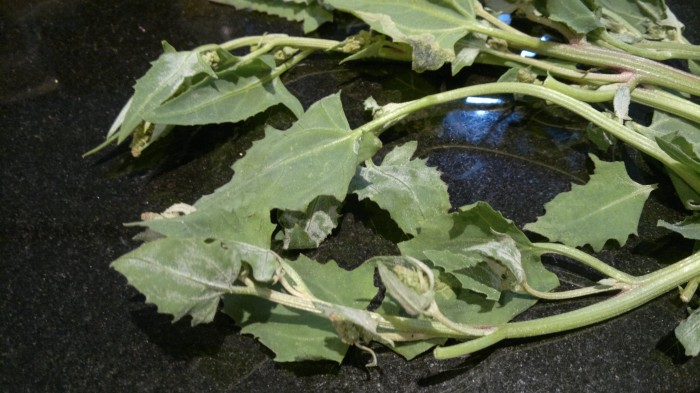
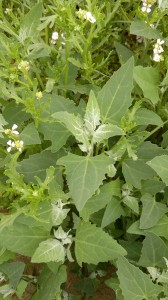
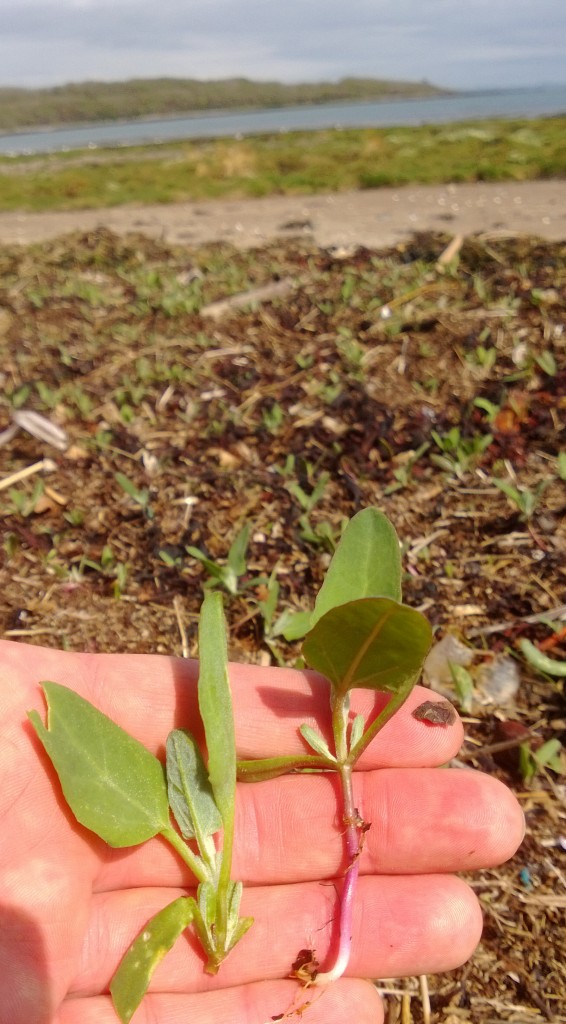
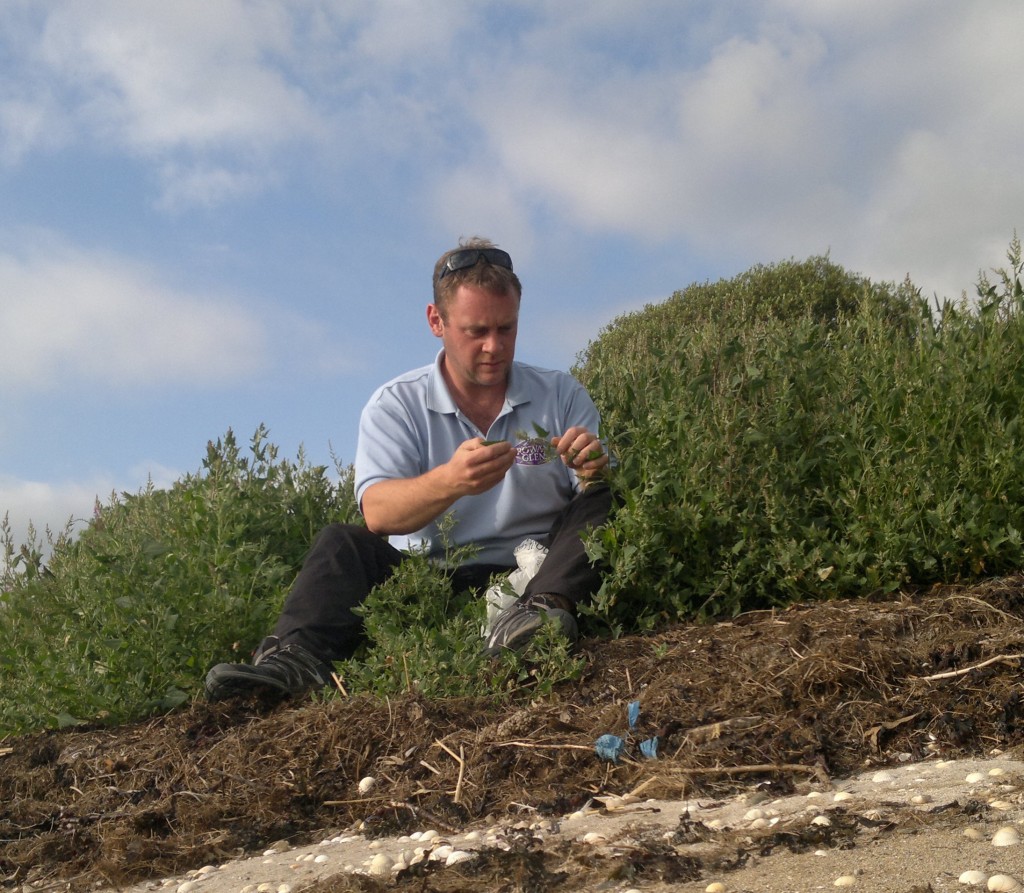

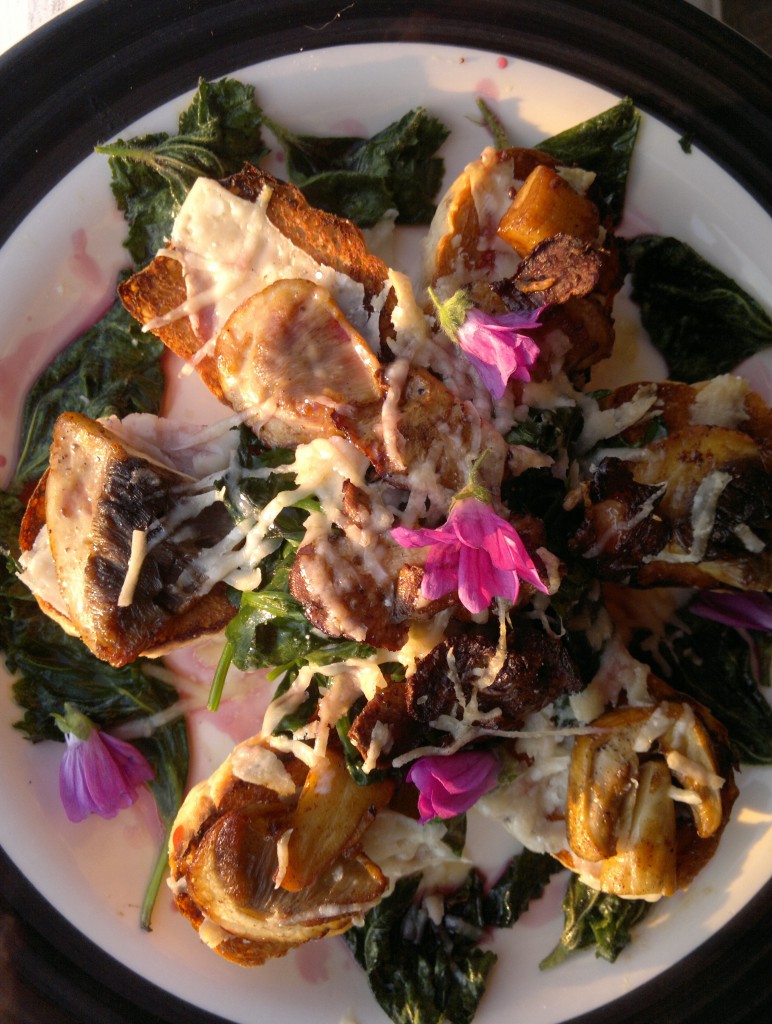
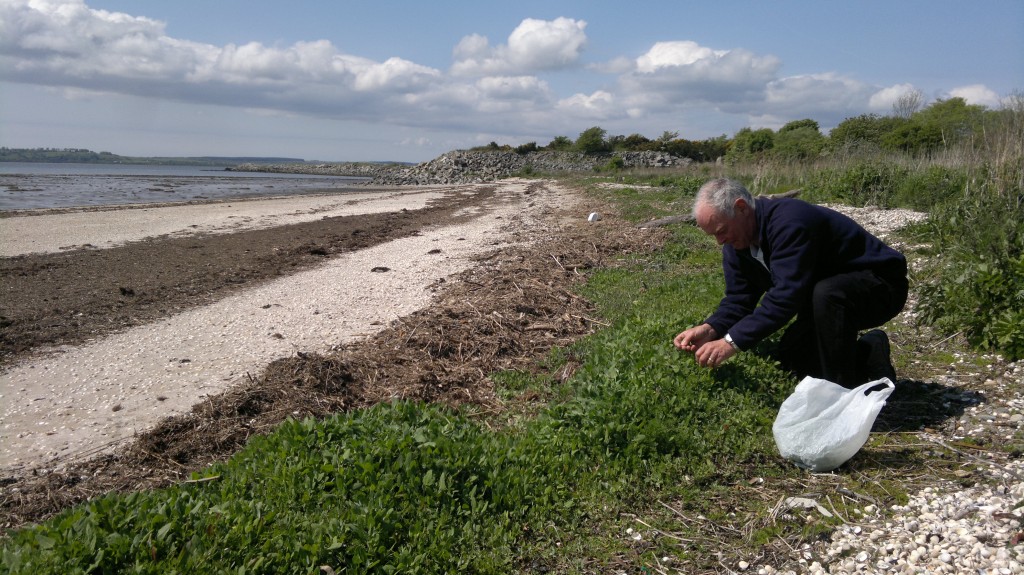
17 Comments
Orache- I’m pretty sure we found this growing on the roadside in Andalucia 3 years or so ago , in ountains about 30 mins in from coast? thought it was from the Amaranth family, is that possible? I haven’t been haven’t really been able to positively identify it since!
Hi Jin, It seems to be a pretty common plant. It is a member of the amaranthaceae, subfamily Chenopodioidaceae – the goosefoots. There are plenty that grow inland, the most well known being fat hen. To my knowledge, oraches are specifically coastal. Happy hunting! Mark
I’m wondering if there is an edible use for those plentiful seeds. Ei. sprouting, drying, eating as is and anything nutritional pros or cons?
Hi Tonia, I believe it is related to quinoa, and the seed have good nutritional content. I haven’t played about with them much, but certainly will be. Not aware of any issues around it.
Mark.
Apparently the coating of the seed has to be peeled as it contains saponins which make it bitter. Not a task I would look forward to.
Thank you for a superb page! You’ve unravelled some of the mysteries of seaside orache for me; esp pronouncing the name. Thank you.
On our beach in Northumberland there are tons of 3-4 varieties of orache this year. So seeing its resemblance to Fat Hen I’ve tried them raw, but they were all inedible/disgusting. I prefer Fat Hen. I’m yet to find a sea plant here that is not vile (except Sea Lettuce). However, after reading your page I’ll try them cooked and see if this will help. There is so much of it this year it would be excellent if I can use it.
The idea of using the seeds is appealing and I will look into this. If they are as good as quinoa then that will be amazing!
Hi Jo, Nice one trying them. I’m quite surprised – there are a lots of edible coastal plants and I encounter very few people who don’t enjoy most of them. Timing is important though: roach is not nearly so nice when its mature and set seed (like a lot of plants…and people!). Do give it another go in the spring now you are tuned into it.
Cheers, Mark.
Well, we picked lots on the beach walking from Boulmer to Alnmouth yesterday and they were absolutely gorgeous! Sweet/salty/nutty with a really nice texture. We only picked the top leaves.
Hi Mark. I am new to your site and I am very grateful you have chosen to share your knowledge. Sadly, most of the wild orach I have found so far around Scarborough has been along streets where dogs wee. I’m sure there must be more somewhere, but I don’t drive. I am growing purple oracle in my garden, and like it’s mealy spinach like flavour (I forage weeds in my garden too, especially hairy bittercress). I am aware that orach is related to quinoa (which I grow too, as well as amaranth). I have been wondering about the edibility of the seeds, too. The plant look similar to quinoa at certain stages, but quinoa seed is coated in saponins, which requires washing off. The same may be true of orach, perhaps, do you think?
Hi Elizabeth,
I’m glad you find the site useful. 🙂
I’m aware that orache seeds can be used like quinoa, but haven’t fully investigated this yet, so can’t give you any useful advice on this just now.
Cheers
Mark.
Found huge quantities of orache on Troon beach last weekend. Thank you for your helpful post which IDed it for me – I could tell it was a goosefoot but didn’t know about coastal ones. I steamed and ate it with a bit of butter and pepper – dellcious.
Found a hedgerow on Cardross beach. Was wondering if I could dry for infusions into herbal soap?
If you mean drying orache, i’ve never tried. I expect it would be a bit like drying spinach – i.e..not very successful. But might be worth trying…
I would love to try your smoked haddock and orache tart – do you have a recipe?
Hi Liz,
There is a basic recipe here for watercress and parmesan tart: https://gallowaywildfoods.com/recipes/watercress-and-parmesan-tart/
Just lightly poach some smoked haddock in the cream, then flake into pastry case. Sweat the orache leaves in butter then squeeze out excess moisture. Mix with eggs and cream, then pour into pastry case, over the haddock, before cooking the tart.
Mark.
I agree with you that the leaves steamed with a bit of fat like butter, olive or avocado oil “are superior to any spinach.” Love your website and all the beautiful pictures. It helps me identify the edible plants in my yard here in Wyoming. Thank you so much for sharing!
thanks – i’m glad you find it helpful. Its was never my intention to cover US forageables, but I do seem to get a fair bit of transatlantic traffic!